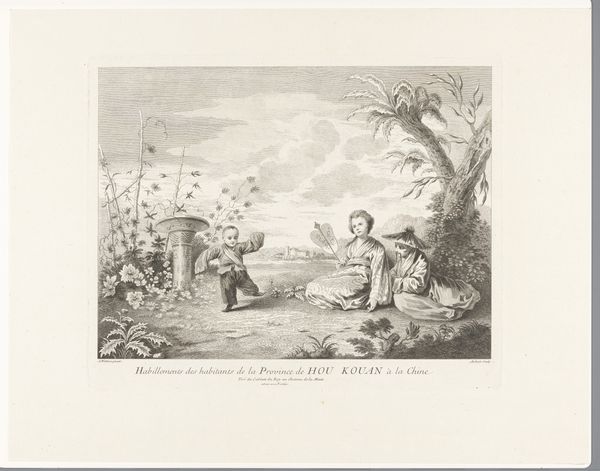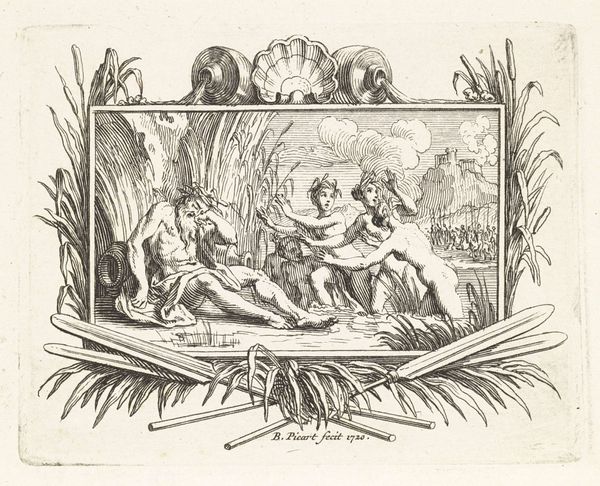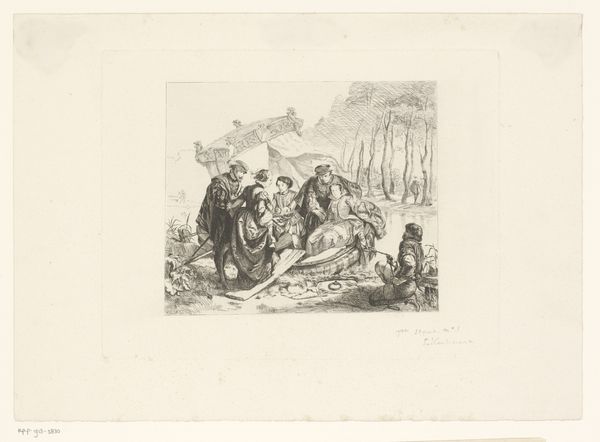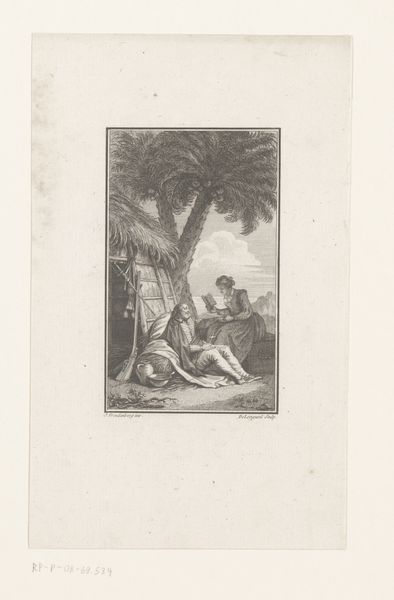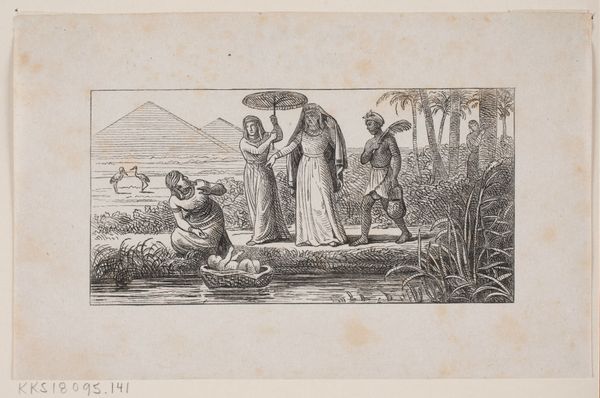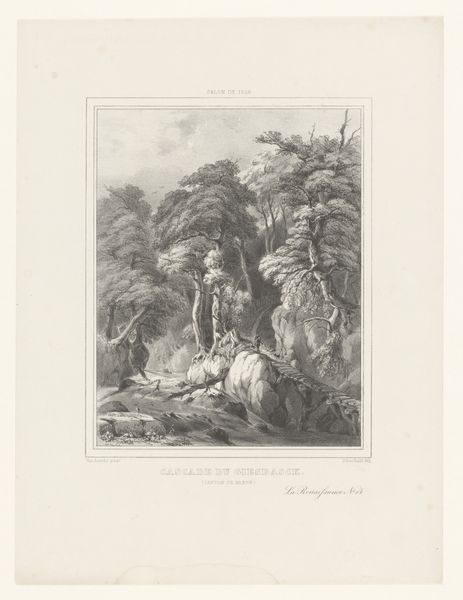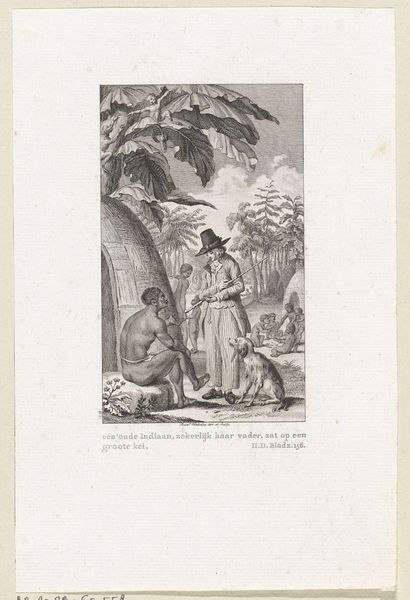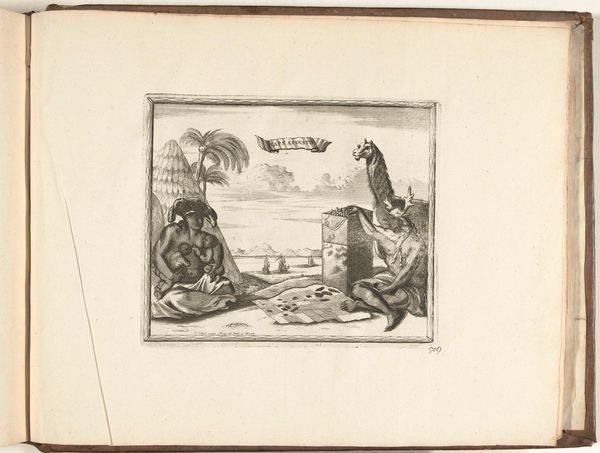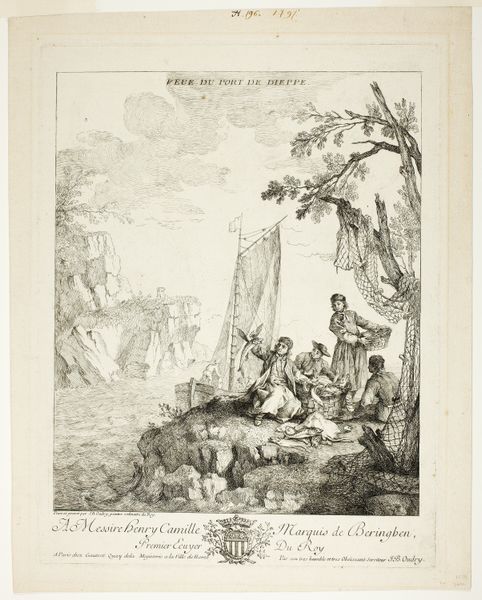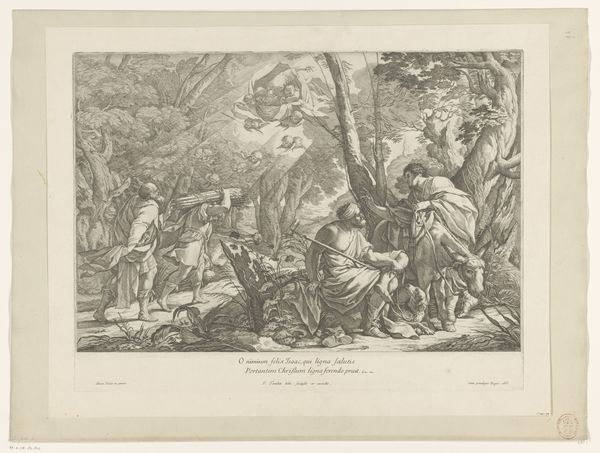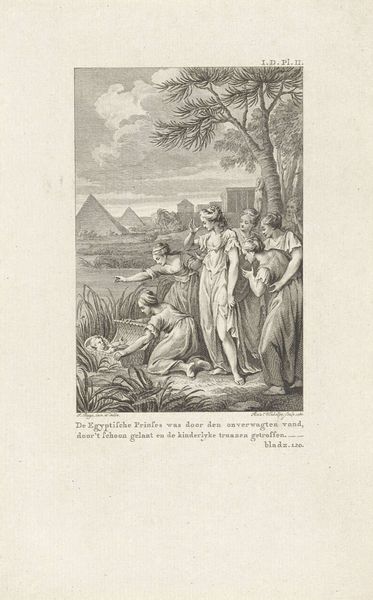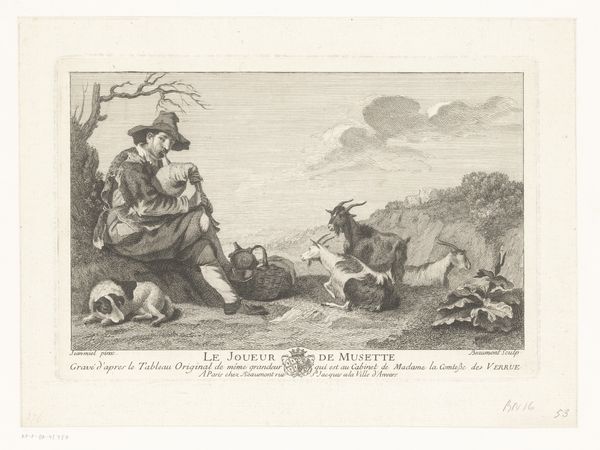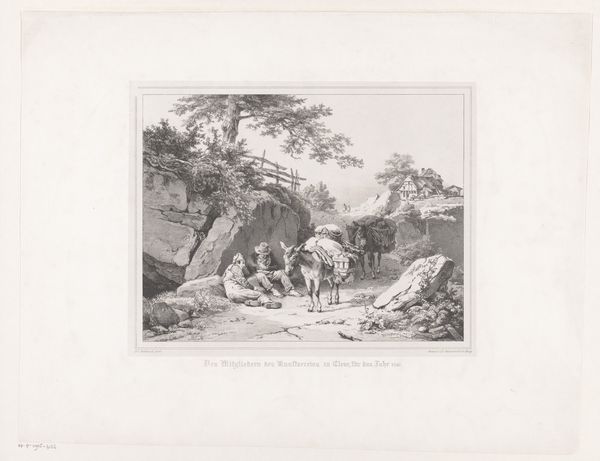
print, engraving
# print
#
orientalism
#
genre-painting
#
engraving
#
rococo
Dimensions: height 318 mm, width 392 mm
Copyright: Rijks Museum: Open Domain
Curator: Let’s delve into this print, “Musicerende figuren zittend rond een tafel” by Michel Aubert, created in 1731. It’s an engraving with distinct Rococo and Orientalist influences, currently residing here at the Rijksmuseum. Editor: My first impression? Tranquil, but with a touch of staged drama. Like a perfectly curated tableau vivant. The light is gorgeous, almost theatrical, casting soft shadows across the scene. Curator: The “tableau vivant” aspect resonates, given the period's fascination with constructed identities. Orientalism was, after all, a Western lens projecting fantasies onto the East. The sitters gathered round a table feel less like a casual scene and more like characters in a carefully designed performance. The very title emphasizes their attire. Editor: Absolutely! Look at their faces: enigmatic smiles that say less "joyful gathering" and more "posing for the artist." I feel like I’m observing a meticulously constructed dream – delicate and otherworldly, but possibly fleeting. It is a scene of harmonious, peaceful engagement, yet detached at the same time. Curator: That detachment speaks volumes about the power dynamics at play. European interpretations often lacked genuine engagement with the complexities of the cultures they depicted, reinforcing skewed images of non-Western people. How does this awareness reshape our encounter with Aubert's print? Editor: It prompts a lot more questions about the true context here! This artwork becomes like a conversation, not a one-sided statement, and my reflection makes me curious and drives me to engage more. This peacefulness might be a front. What is happening underneath? Curator: The presence of children here is particularly significant; one even seems to be engaged in some form of music-making with a hand drum or rattle, which tells of social norms. How were they being framed, presented to this European gaze through these exotic settings? Editor: Good question. And there is also an interesting contrast in tonalities between the characters. This creates a contrast between light and darkness; that's what drew me in. But after thinking about it and going deeper into context, my thoughts resonate with these darker underlying historical facts. What looks pleasant, at first glance, invites me to question every assumption. Curator: It does make you ponder over what elements are amplified and what stories remain silenced. Thank you for adding a voice that amplifies critical inquiry with genuine artistic sensitivities. Editor: Always! Finding deeper meaning beyond beauty—that's the rewarding part for me. Thanks for leading me!
Comments
No comments
Be the first to comment and join the conversation on the ultimate creative platform.
